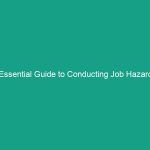Good Morning Team!
Today, we’ll dive into a crucial topic that directly impacts our Safety and efficiency on the job: Crane Load Charts. Understanding these charts is vital for ensuring we operate within safe limits and maintain our commitment to a safe working Environment. Let’s explore why knowing about weight limits and boom angles is not just important but essential for our daily operations.
Understanding Crane Load Charts
A crane load chart is a critical tool that provides essential data on how much weight a crane can safely lift at various boom angles and lengths. These charts are designed to prevent accidents caused by overloading, which can lead to catastrophic failures.
Many employees might think that cranes can lift any weight, as long as the load is within reach. However, this is a common misconception. The weight limits are not just about the total weight but also about the distribution of that weight, the boom angle, and the crane’s configuration.
Key Hazards, Risks, and Safety Considerations
Ignoring the details presented in crane load charts can lead to serious Hazards, including:
- Overloading: Lifting more weight than specified can cause the crane to tip over or suffer structural damage.
- Improper Boom Angles: Incorrect boom angles can affect the stability and lifting capacity of the crane, leading to accidents.
- Load Swing: Loads that are not properly secured can swing unpredictably, posing risks to operators and nearby workers.
The consequences of neglecting these risks can be severe, including injuries, fatalities, and damage to property and equipment. It’s crucial to prioritize safety through proper understanding and adherence to load charts.
Best Practices, Procedures, & Actionable Advice
To ensure safety when using cranes, follow these Best Practices:
- Always Consult the Load Chart: Before operating a crane, review the load chart to understand the maximum weight limits for the specific boom angle you intend to use.
- Check Boom Angle: Ensure that the boom angle is set according to the load chart specifications. Adjustments may be necessary depending on the load’s weight and distribution.
- Conduct Regular Inspections: Regularly inspect cranes and their components to ensure they are in good working order. Look for signs of wear and tear that could compromise safety.
- Use Proper Rigging Techniques: Ensure all loads are rigged correctly. Improper rigging can lead to load shifts and accidents.
For example, in a recent incident, a crane operator failed to check the load chart before lifting a heavy beam. The operator was unaware that the boom angle required to lift the beam exceeded the crane’s capacity, resulting in a dangerous tip-over. Thankfully, no one was injured, but the crane was severely damaged, leading to costly repairs and downtime.
Regulations, Standards, and Compliance
Compliance with safety Regulations is critical for protecting workers and ensuring a safe work environment. The Occupational Safety and Health Administration (OSHA) and other regulatory bodies have established guidelines regarding crane operations. Key Standards to be aware of include:
- osha Standard 1926.1400: This standard outlines the requirements for the Operation of cranes and includes specifications for load charts.
- American National Standards Institute (ANSI) Standards: These standards provide guidelines for crane safety and operational practices.
Understanding and adhering to these regulations can save lives and prevent costly accidents. Always ensure that your crane operations comply with these standards and company policies.
Employee Engagement & Discussion
Now that we’ve covered the essentials of crane load charts, let’s open the floor for discussion. Consider these questions:
- Have you ever encountered a situation where a crane operation could have used better adherence to load charts?
- What challenges do you face when interpreting load charts on the job?
- How can we improve our communication and Training regarding crane operations?
Your insights are valuable, and sharing experiences can help us all improve our safety practices.
Conclusion & Key Takeaways
In conclusion, understanding crane load charts is essential for maintaining safety and efficiency on the job. Remember the following key points:
- Always consult the load chart before operating a crane.
- Adhere to specified weight limits and boom angles to prevent accidents.
- Stay informed about safety regulations and Best Practices.
Let’s make a commitment today to prioritize safety in our crane operations. Thank you all for your attention and for your dedication to keeping our workplace safe. Together, we can ensure that everyone goes home safely at the end of the day!


